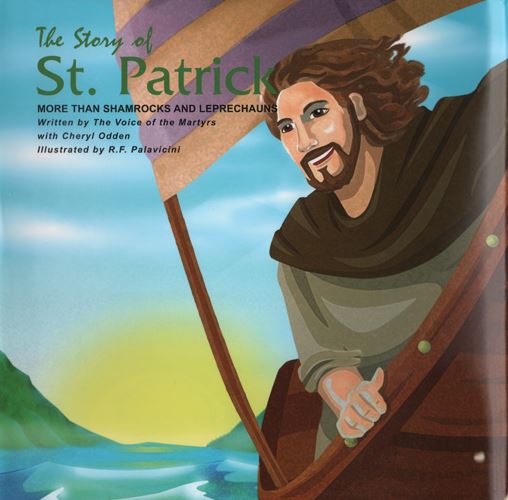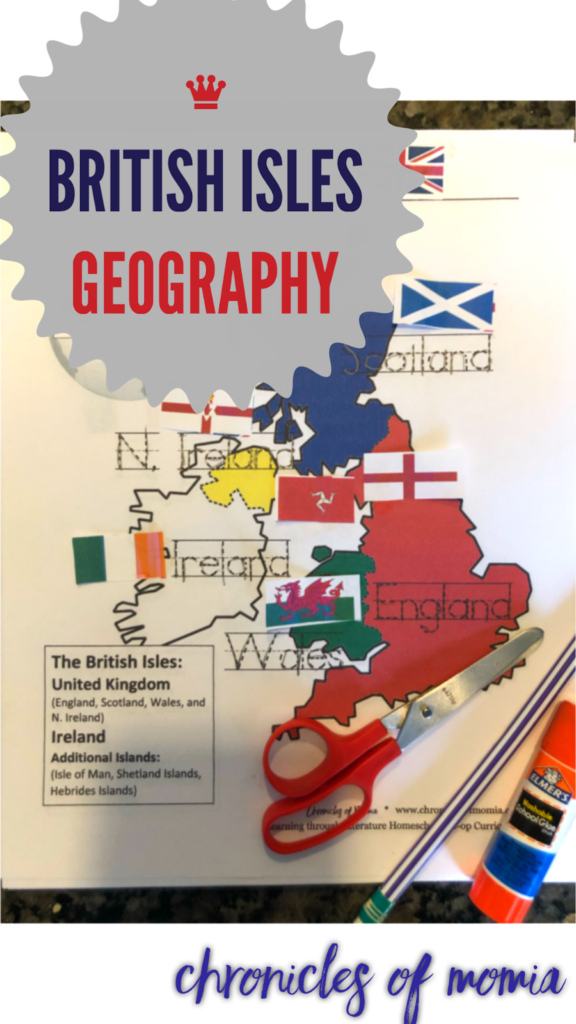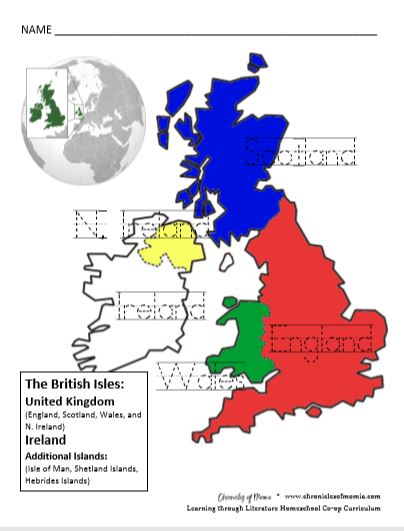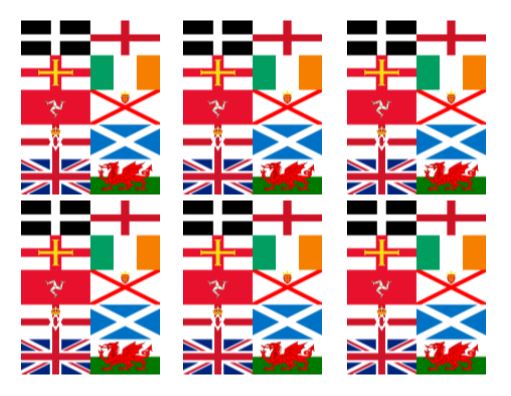If you’ve stumbled here from Pinterest, or some other site … welcome! While each of these books/lessons can stand alone, they are also a part of a year-long series that we have taught at our homeschool co-op. Each lesson builds in part on the one before. Some stories also have similar themes with the books that go before/after them. If you are interested in more information, or to see the complete booklist, check out our main page, More FIAR – Inspired Literature-Based Lesson Plans, especially for homeschool and homeschool co-ops. Thanks for looking around, and welcome to the site!
The Story of St. Patrick
Written by The Voice of the Martyrs with Cheryl Odden
A note on this book:
This is another wonderful book put out by the Voice of the Martyrs. I cannot say enough about this series. I’ve read and reread them with my own children since they were five years old, and I’ve now taught these books with our homeschool co-op as well, (we’ve did The Story of St. Valentine earlier in the year and William Tyndale and the English Bible last year). These books are excellent. The pictures are bright with faces full of realistic expression that convey the joys and difficulties within the story. These are real life people that went through very difficult circumstances for the sake of the gospel. And yet, they met the Lord and triumphed victoriously in the midst of such dark circumstances. At first glance, it may seem these stories are a little too much for young readers and listeners. But after having shared these stories numberous times with my own children and several classrooms filled with them, I have to testify that these stories seem to grip children in a profound way that most books don’t. Their sensitive hearts are right there, captivated with concerned eyes, cheering for good to prevail – angry with the bad guys.
Friends – I want my kiddos to learn to do hard things. As a Christian, I pray for a revival of the gospel in our land, I truly do – but at the moment, it looks like Christians and all that we believe is increasingly being made fun of, mocked, and rejected. This is the world our children are growing up in. They’re going to face the darkness soon enough, why not show it to them early … and let them hear of these heros of the faith that faced the darkness head on with Christ, and triumphed victoriously. And I will tell you – they can handle it. They really can.
The Story of St. Patrick, published by The Voice of the Martyrs, is based off of his own autobiography, The Confession of St. Patrick, and is primarily based of off his own accounts of being kidnapped from his home (though there is some question whether it was from his home or from a beach), and taken away to Ireland, where he was sold as a slave.
He had grown up in a Christian home, but in his teenage years, basically had rejected his faith – until he found himself a slave to a druid priest, looking up at the skies in a foreign land. There he prayed and called out to God, who gloriously saved him. Through a miraculous turn of events, years later, God brought him back home. Yet, within a short time, God spoke to him again and drew him back to the land of his captivity to share the good news, over and over and over, in a land filled with darkness.
Things I Need:
- The Story of St. Patrick
- The Story of St. Patrick Handwriting Sheet
- Chalk/white board markers and the ability to write on a board is helpful, though not imperative
- A Map showing Ireland and Great Britain
- (if it shows according to the 400AD world, even better)
- British Isles Map Printout (below)
- British Isles Flags Printout (below)
Review:
- “Who can tell me the name of the story we read last week?”
- “Who can tell me a little about the story?
- “How did the African American’s get to America?” (stolen out of their country, loaded on slave ship)
- “Did they eventually get their freedom? … How?” (Christians and faithful supporters on the Underground Railroad)
Our story today is about a boy named Patrick, who also got kidnapped out of his land and brought to a foreign country to be a slave.
Introduce the Story:
If you want to familiarize yourself with his story, there are a couple of kid friendly versions on youTube:
Read the Story:
- Britain, which was ruled by the Roman Empire at the time, and Ireland. You can show them on the map as you are reading through various parts of the story mentioning his travel.
- His choice – just because you have a Christian family, doesn’t make you a Christian. At some point YOU must choose on your own to become a Christian. This is what Patrick did when he was alone on the Island
- In the darkest of circumstances, God meets us. * “the Lord is close to the broken hearted” (Ps 34) “when i am afraid I will trust in you” (Ps 56)… and soooo many others
- Did Patrick want to get back at those who had kidnapped and mistreated him? No – God gave Patrick the strength to go back to those who had hurt him the most and tell them about the love of God.
- What was it Patrick experienced that made him want to go back? Discuss the goodness, wonder, greatness of God. He must have experienced something so amazing to be willing to go back to a country filled with evil to share about God.
- If you have a world map, you could show the path St. Patrick traveled. We don’t know exactly what point on England he left from, nor what point of Ireland he landed on. So you could point out the coast line, and several possible routes he could have traveled.
Activity: British Isles Geography:
Since Patrick goes back and forth between England, (which was under Roman rule at the time, though we didn’t go into that in our class) this seemed like a good time to take a closer look at the British Isles.Before Class Prep Work:
Things you will need: scissors, gluesticks, printed British Isles Flags Sheet, cut into sections (below), printed British Isles Map (below)
- Have the class put their name a the top of the paper.
- Trace the names of the Countries
- Here’s where it gets tricky. The British Isles are Divided a few different ways. There are the Individual Coutries, which all have their own flags. Then, there is Great Britain (which includes all the colored countries on the map below), which has the famous and best known Union Jack British Flag. Then, there is the United Kingdom, which includes Scotland, Whales, and England – but not Northern Ireland. Explain as much or little of this as you would like.
- Give each child a block of flags (from the handout below, pre cut the blocks for the kiddos). Have those that are able cut the flags apart. Younger children may need a little bit of help to keep the flags straight. Be sure to show them where the flags start and stop before they cut.
- Now, go through the countries one on one, showing them where the countries are, and then have them glue a flag onto the country. The flag block includes all the countries in the British Isles, including the tiny Islands (like the Isle of Man, that tiny circle in the middle of the countries), and even a flag that isn’t used anymore (Norther Ireland’s Flag). Feel free to leave out several of the flags, as we did. Do include: Scotland (blue flag), England (Red Cross), Whales (Dragon), Ireland (Tri-Color Stripe, similar to the Italian Flag that we showed at the beginning of the year), and definitel the main more well-known flag of Great Britain, the blue with red stripes (also called the Union Jack).
- Add other flags according to your preference or the classes interest.
Thats it!
Handwriting Copywork:
Today’s verse is taken from Mark 16, “go into all the world and preach the gospel …” Patrick went to one of the darkest, hardest lands. (We’re talking about druids and witches/warlocks during time of the dark ages – full of demonic activity. This was a dark, dark land). Still, Patrick was strengthened by God to go back to this evil land and share the good news with great success. (share as much or as little of that as you would like)
Remind the class to start their letters “at the top”.
If you want to share a little on the verse, you can bring up,
“go” – we need to leave our comfort zones and be willing to share the good news about Jesus.
or “all the world” – even the druids needed to hear the gospel. The darkest, most evil heart – can still receive the gospel.
or “gospel” – gospel means good news. Like the activity done earlier, do we know how wonderful and awesome and life changing this gospel is? If we really held it like the most treasured gift that it is, we might be more eager to share it.
 |
| Click here for printable version |
Extras
Or, you can check out the complete Learning the ABC’s through Literature Series, which is a similar series that we did with this same group of kiddos a year earlier. Both of these series of books have been inspired by the Five in a Row curriculum, with many of the books being the same. The ideas, implementation of it for a co-op, and printables are all my own, unless otherwise indicated.
Also – I would love to hear from you! If you have feedback, suggestions, or questions … or if you have used this in some way … please, share a picture, post a note, or just say hi. Especially if you’re using this for a co-op … it’s great to get ideas and share them around to help each other!








